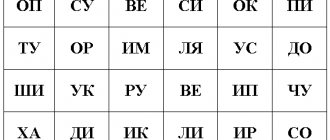Dexterity, grace, plasticity, flexibility, ideal posture and excellent physical shape are not a complete list of what dance classes can give your child. Choreography for children liberates and gives a sense of self-worth, develops communication skills in a team and reveals individuality, and for some it can become a real start in life and open the way to worldwide popularity.
All this, combined with an individual approach, attentive attitude and a subtle understanding of the nuances of working with children, will be given to you by the “School of Modern Choreography”. We invite children from 3 years old to choreography classes for children in small groups in the following areas:
- classical choreography;
- jazz;
- stretching (stretching);
- general physical training (GPP);
- professional variety and competitive choreography;
- choreography for figure skaters.
General physical training for children
Stretching for children
Choreography for figure skaters
Variety and competition group
Jazz - dancing for children
Classical choreography for children
What type of dance to choose for a child aged 3, 4, 5, 6, 7, 8, 9 and 10 years old
Each child is a bright individual with his own unique set of abilities and talents. The task of parents and teachers is their maximum disclosure and development. Therefore, doubts often arise about where it is better to send the child and in which direction he can manifest himself best.
When choosing a specific direction, you need to consider:
- age; (you can start classes with a child as young as 3 years old, but in general it’s good to start classes with children 5, 6, 7, 8, 9 and 10 years old)
- level of physical fitness;
- child's preferences.
Every caring parent understands that it is the child’s desire that is put at the forefront. This is the only way to not only give him a happy childhood, but also to maximize his potential, instill in his child a love of sports and self-confidence.
Whatever you choose, classical ballet or modern choreography for children, stretching classes or general physical training, we will be able to lay a solid foundation for the harmonious physical development of the child, develop flexibility, plasticity and coordination of movements. Regular classes will help instill musicality and creatively enrich a growing dancer, teach them to overcome difficulties, not give up and continue to work on themselves no matter what.
In our work with children, we treat everyone carefully and do not judge or compare with others. For us, the first place is the self-improvement of each child and the disclosure of his inner potential and talent, so that he develops day by day. For those who strive for a professional career, the “School of Modern Choreography” will provide the opportunity to go through all stages of development under the strict guidance of experienced mentors and achieve maximum results.
MAGAZINE Preschooler.RF
Choreography in kindergartenChoreographic art is an independent form where movements, music, light and colors are combined in a new way, where the body has truly found its own language. Choreographic art convinces people that art is a continuation of life and self-understanding, that anyone can do it if they overcome laziness and fear of the unfamiliar.
In the formation of a child’s aesthetic and artistic culture, choreographic art is the most important aspect of aesthetic education. Choreography is a world of beauty of movement, sounds, light colors, costumes, that is, a world of magical art. Children strive to see this at ballet performances, in art albums, and videos. Their subsequent independent opinions and judgments sometimes deserve respect. Dr. Celia Sparger, author of Anatomy and Ballet , former consultant to the Royal Ballet of England, noted that “ballet is too complex a means of cultivating posture, disciplined and graceful movement, quick brain response and concentration to limit its study to only a select few.” . In Russian education, choreography lessons are becoming mandatory. They educate and develop not only the artistic skills of performing dances of various genres, but also the development of habits and norms of behavior in the child in accordance with the comprehended laws of beauty.
Choreographic art classes in preschool educational institutions contribute to the physical development of children and enrich them spiritually. This harmonious activity attracts children and parents. A child who masters ballet posture delights those around him. But its formation is a long process, requiring many qualities from children.
A child’s choreographic art is a complement and continuation of his real life, enriching it. Practicing this art brings him such sensations and experiences that he could not get from any other sources.
Educational work in institutions of additional education is a complex, multifaceted process. It is associated with the implementation of an extensive program of organizational, pedagogical, artistic and performing measures. Each direction in the practice of a teacher-leader has its own internal logic, its own patterns and principles of implementation. Without their knowledge and critical analysis, a sufficiently effective organization of not only artistic, creative, educational, educational and rehearsal activities, but also ensuring the pedagogical process as a whole is impossible.
The specificity of educational work in an institution of additional education is determined by the organic combination of artistic, performing, general pedagogical and social aspects in its implementation and provision. The efforts of the teacher are aimed at forming a worldview in children, at nurturing a high moral culture, and at artistic and aesthetic development. These tasks are solved by involving children in artistic and performing activities, with the organization of educational and creative work. Therefore, the first level of raising a child using choreography in a preschool education institution is his education and training as a performer. The second level of education is the formation of a child as an individual, the development in him of civic, moral and aesthetic qualities, and general culture.
The effectiveness of preschool education for children largely depends on the health status of the students. Living in a period of rapid development of modern and mass physical inactivity, when a child becomes hostage to rapidly developing technical systems: television, computers, cellular communications - all this leads to a lack of motor activity of the child and affects the health of the younger generation.
Modern pedagogy faces a further deterioration of not only the physical but also the mental health of children. In order for the inner world, the spiritual makeup of children to be rich and deep, and this is truly possible only when the “spirit” and “body” are in harmony, measures are necessary for the holistic development, strengthening and preservation of children’s health. The determining factor in the system of preserving and developing the health of the younger generation can be a well-founded educational process in a preschool institution. A child entering kindergarten has a limited supply of motor skills, with impaired posture and coordination. Many are stiff, motionless, slow, others are loose and fussy.
Choreographic art promotes proper physical development and strengthening of the child’s body. Aesthetic taste, culture of behavior and communication, artistic and creative and dancing ability, fantasy, memory are developed, and the horizons are enriched. Choreography classes are aimed at developing an organized, harmoniously developed personality.
The child has an individual form of development and claims the right to support his individual education. It is not children who must adapt to the education and upbringing system, but programs and teaching methods must adapt to the child and form in him a conscious motivation to acquire knowledge and develop his own health.
The development of a preschool child occurs thanks to activity, manifested in various forms of activity, among which play occupies an important place - a special form of a child’s assimilation of the surrounding reality. The game acts as a universal means of development and learning, as a means of stimulating the creative activity of children and forming initial choreographic skills. This is the main and main way of aesthetic education and introduction to art at this age.
The task of the additional education teacher is to create conditions for searching for characteristic features of the characters’ plasticity and details of their behavior. The expressiveness of performing figurative movements, recreating the image as a whole. Basically, this is the natural world that surrounds us, toys, good fairy-tale characters. Children are offered sketches, short stories, bright short musical works for mastering the image, tasks for improvising dance movements, and games with improvisations.
Thus, choreographic art is one of the means of aesthetic education and education of children in preschool educational institutions. Choreographic art, like any other art, can bring deep aesthetic satisfaction. A child who dances well experiences unique sensations from the freedom and ease of his movements, from the ability to control his body; he is pleased with the accuracy, beauty, and plasticity with which he performs complex dance movements, which serves as a source of aesthetic satisfaction.
In the world of choreographic art, the beauty and perfection of form are inextricably linked with the beauty of the inner content of the dance. The performance of dance contains elements of artistic creativity. A dancing child in preschool educational institutions strives to express his mood, emotions in a beautiful, aesthetically perfect form of dance, shows his inner qualities, and expresses his worldview. By mastering dance vocabulary, a child does not just passively perceive beauty, he overcomes certain difficulties, does certain work so that this beauty becomes available to him. Having learned beauty in the process of creativity, the child feels more deeply the beautiful in all its manifestations: in art and in life. Choreographic art is an effective means of organizing a child’s leisure time in a preschool education institution, and a cultural form of recreation.
| Next > |
The benefits of choreography classes for children
It is difficult to overestimate the benefits of choreography for children. Regular classes allow children and schoolchildren to:
- develop an ear for music;
- feel the music, understand the classical works of famous composers;
- develop correct posture;
- gain a sense of balance;
- increase coordination of movements;
- improve physical fitness, stretching and flexibility, etc.
Choreography for children from 3 years old is aimed at general strengthening of all muscle groups, stretching, acquiring group work skills and, of course, learning the first bright dance numbers.
Not only girls, but also boys study at the “School of Modern Choreography”. Although we will not deny that their number is not the same. But this gives boys huge advantages, because they will definitely get the best male roles in ballet performances. And beautiful posture, a slender, well-developed body, strength and agility will be an additional, but extremely important bonus for guys.
In our work, together with children, we overcome difficulties, together we rejoice and experience failures, we look for ways to solve problems and achieve success. The child’s regular participation in creative competitions, festivals, city concerts and the genuine pride of parents in their child’s achievements is our main joy!
Creative and intellectual development
Choreography is a creative activity that allows you to develop your imagination, sense of rhythm, hearing, and the ability to maintain a given pace.
Classes also develop:
- the ability to feel and understand music;
- the ability to express your thoughts and feelings through the creative process;
- memory (at each lesson, kids have to remember new movements and steps);
- intelligence (scientists have found that when dancing, new neural connections are formed and the processes of thinking formation are accelerated).
During classes, children are introduced to the classics of world culture. Children learn to distinguish between musical styles, they develop their own preferences, and develop the ability to understand music.
At what age can you sign up for choreography for children?
The School of Modern Choreography accepts children from 3 years old. Such an early start to classes provides many advantages, as children develop more harmoniously physically and spiritually. And the base received in preschool age will become a reliable foundation for further classes in ballet, modern choreography or other sports.
Every child can enroll in the “School of Modern Choreography” and continue their education as an adult. Classes are held in small groups, divided depending on the age of students and level of physical fitness. After all, some are just beginning to comprehend the interesting science of choreography, while others come with an already solid base. Therefore, we individually select a group for each new child.
For the youngest, the lesson lasts 45 minutes, for older groups the training lasts 55 minutes. Due to their age, children cannot practice continuously, so for them exercises are replaced by play and rest, and choreography classes for children are built on a smooth transition from simple to complex, with constant repetition of the material covered and gradual complication.
The school regularly holds reviews in a harmonious atmosphere, which allow us to assess the success of each child, his individual achievements and make a forecast for the future, which gives a powerful charge of motivation for further studies and obtaining greater results. Thus, with us, each child develops in the most comfortable rhythm and positive atmosphere.
Choreography for preschoolers and schoolchildren differs from classes for adults, because each child, regardless of age, needs to find his own approach, interest him, entice him to dance and inspire confidence in the choreographer. Adults make their own informed decisions and come to the “School of Modern Choreography” with a clear understanding of what they want to achieve and what efforts they are willing to make. Therefore, classes with children are often held in a playful way, immersing them in situations from fairy tales. As a result, kids sincerely begin to love dancing, go to classes with joy and develop both their body and imagination.
How often should you exercise
Regular exercise twice a week will bring good results, but to get the maximum effect from training, it is recommended to exercise 3 times a week. Sometimes children and their parents decide to attend individual training. This is especially true when preparing to participate in a performance or wanting to work more closely on stretching or artistry.




